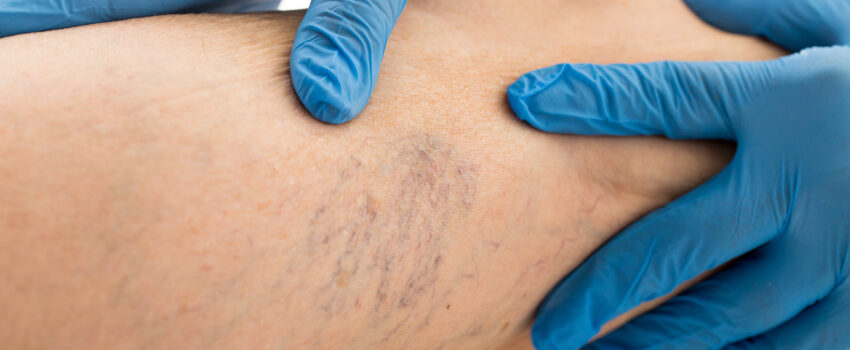Tiny veins on the legs—known as spider veins—aren’t usually a serious medical concern. Some who live with leg veins may view them as unsightly and inconvenient, but the good news is that they can be effectively removed at a dedicated vein treatment center.
What causes spider veins anyway, and why do they tend to form on the legs? Here are answers to those questions and how to contact North Shore Vein Center on Long Island to request an appointment for treatment.
What Are Spider Veins?
Spider veins are thin, tiny blood vessels that lie close to the skin’s surface. These veins, which are typically blue or purple in color, branch out in several directions to resemble spider legs. They can be seen under the skin, but they don’t bulge out and cannot be felt like varicose veins.
Spider veins don’t usually cause symptoms or problems, but they can certainly be bothersome to those who have them. These veins tend to form on the legs and upper thighs, though they may also form on other parts of the body, including on the hands and face.
Why Do Spider Veins Appear on the Legs?
The legs are responsible for supporting the majority of body weight. Factors like pregnancy, excess weight, and injury can sometimes put extra pressure on leg veins and damage the valves that allow blood to flow back to the heart. As a result, blood can flow backward or pool in the vein to cause the development of spider veins and, sometimes, varicose veins as well.
Hormone changes, sunlight, and standing or sitting for long periods are other factors that may contribute to spider veins. A vein specialist can often examine leg veins to determine the right treatment approach.
What Are the Best Spider Vein Treatment Options?
There are several treatment approaches for spider veins, depending on their location and size. Here’s a look at the pros and cons of each of these leg vein treatments.
Sclerotherapy
Sclerotherapy is a minimally invasive injection therapy. It involves the use of a medical solution called a sclerosant, which is injected into the leg veins to make them collapse and seal shut. Blood is rerouted to nearby veins, and the spider veins gradually fade from view.
Results from sclerotherapy are usually noticeable within a few weeks and are often permanent. However, it may cause mild bruising, swelling, itching, and discomfort.
Laser Treatment
Laser treatment is a non-invasive option for leg veins, which makes it highly appealing for those who want to avoid needles, incisions, and anesthesia. With laser therapy, spider veins are destroyed by a highly concentrated beam of light energy. The veins are reabsorbed by the body and fade from view after a few treatment sessions.
Laser treatment is relatively painless and lasts an average of 30 minutes, which makes this option convenient for those with busy lifestyles. Potential drawbacks are that it may require several treatment sessions spaced over several weeks and may produce mild side effects such as redness and discomfort.
VeinGogh™
VeinGogh™ is a minimally invasive treatment that uses a fine probe to deliver tiny bursts of radiofrequency energy to spider veins. It works similarly to sclerotherapy and laser therapy in that it destroys the leg veins to cause them to collapse and seal shut.
Results from VeinGogh™ are usually noticeable right away. Potential disadvantages are that it may cause a pinching sensation during treatment, along with slight bruising and redness.
Endovenous Laser Ablation
During endovenous laser ablation, a vein specialist makes a tiny incision into the leg and inserts a laser fiber directly into the spider vein. The laser heats up the vein to make it collapse without harming nearby veins or tissues. Like with most other vein treatments, the spider veins are gradually absorbed by the body and fade from view.
Endovenous laser ablation is minimally invasive and takes about one hour to perform. Cons of this procedure are that results may not be noticeable for up to one year and there may be bruising and slight discomfort at the treatment site.
Get a Consultation
Spider veins may be unpleasant, but the above treatments are highly effective and produce little to no downtime. A vein specialist can examine leg veins and make a sound treatment recommendation.
North Shore Vein Center offers a variety of Long Island leg veins treatment options, including sclerotherapy. Contact North Shore Vein Center today at (516) 869-8346 to request an initial vein consultation and learn more about your treatment options.

